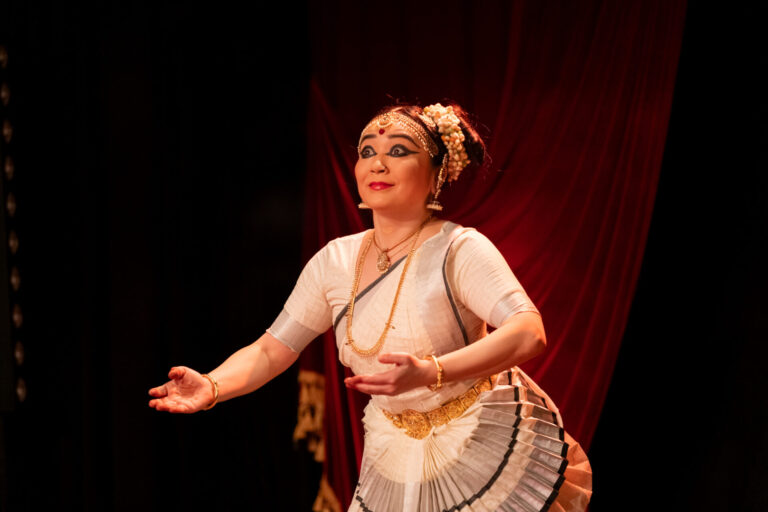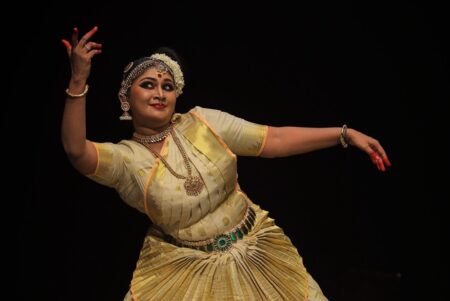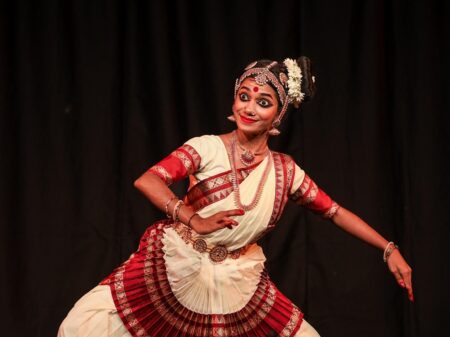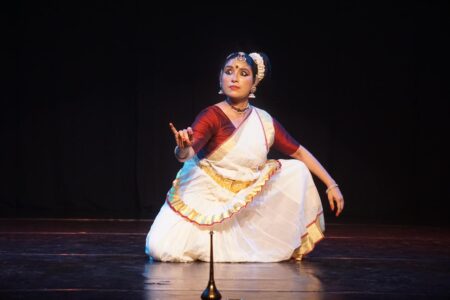Keiko Okano’s Mohiniyattam performance in Tokyo was a heartfelt tribute to Kerala’s classical dance heritage, presented in a modern setting
In a rare and compelling convergence of cultures, Keiko Okano’s recent Mohiniyattam performance at Silkroad Café, Tokyo, Japan into a sacred haven. This intimate venue, typically celebrated for its diverse musical performances, became the stage for an evocative journey through Kerala’s rich dance heritage.
The juxtaposition of this ancient Indian classical dance form against the modern metropolis of Tokyo was striking. The stage, adorned with traditional Indian motifs—an altar to Nataraja and Bhagavathy, fresh flowers, and oil lamps— that are rarely allowed indoors in Tokyo for fire safety measures — exuded a sense of reverence.
Keiko Okano, a disciple of Guru Nirmala Paniker, has devoted 15 years to mastering the art of Mohiniyattam, splitting her time between Kerala and Tokyo. Trained also in Navarasa Sadhana under Guru G. Venu, her performance was simply mesmerising, and convincing; skilful, yet effortless.
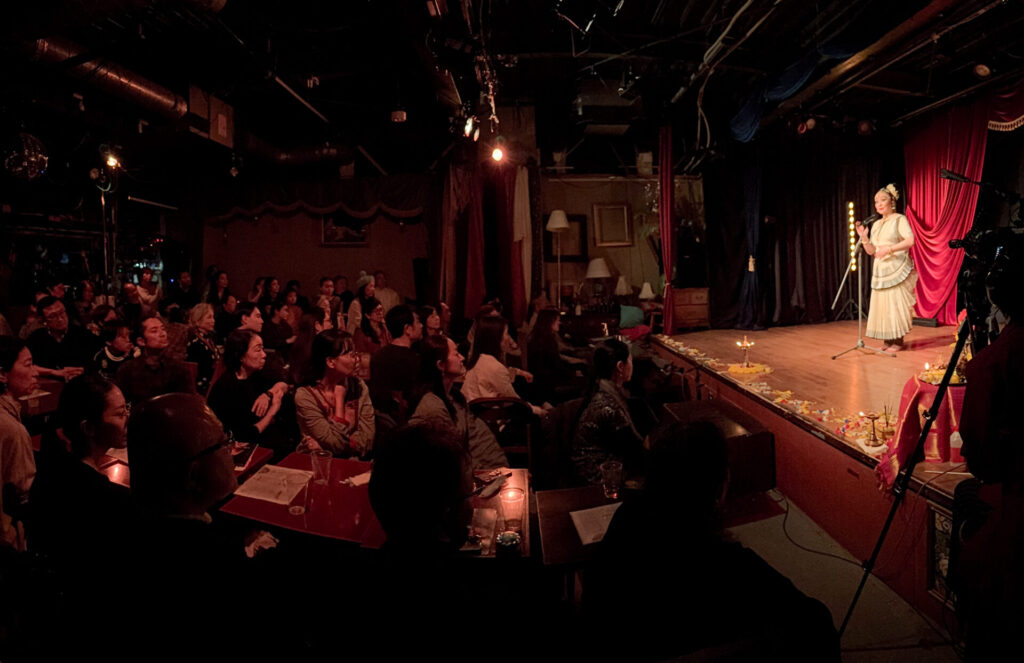
The full house audience had a mixture of backgrounds; some were long time followers of the artist, some were connoisseurs of Indian art but had never seen her performance, and some were completely new to the art form.
Invoking the divine
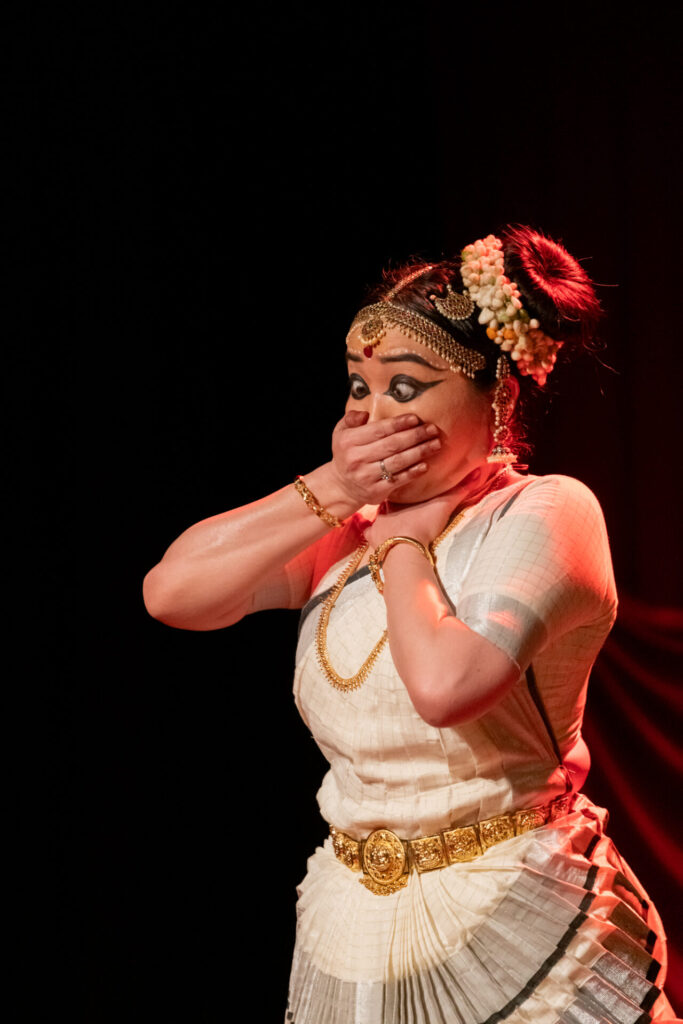
Keiko gave a detailed introduction to the stories enacted in the dance before each composition started (except for the Ganapathi Sthuthi of course, for an auspicious start of the evening), which gave a good grasp of the stories and the mudra expressions to the audiences who were mostly unfamiliar with or completely new to them. The generally quiet yet serious Japanese audience laughed quietly sometimes. As she explained the background of the dance, she would also describe her days at Natanakairali gurukulam in Kerala, and how blessed she feels to have received the trainings from great masters in gurukulam style, which is increasingly rare in this modern time.
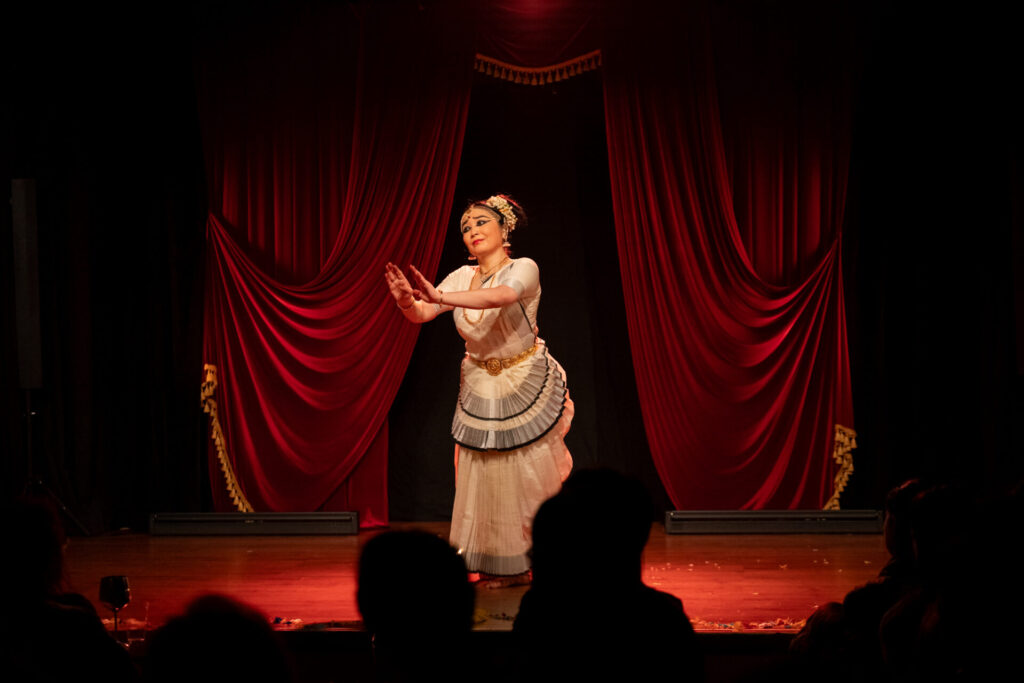
Next came the Varnam “Kosalendra”, a unique episode of Ramayana, where Seetha is made to draw a picture of the asura king Ravana by the three mothers of Rama, because of which she gets into trouble. The mean but comical expressions of the mothers and the sorrow of Seetha in contrast were depicted especially lively with captivating strength.
As Keiko went on to describe the swayamvara marriage scene of the divine couple, when the suitors of Seetha were trying to hold Shiva’s bow, many of the audience were drawn in and looking into the stage floor to see what was going on. By this item, Keiko’s abhinaya seemed to be more comfortable and freer, eyes brighter, and the dance more relaxed and smoother. Her good grasp of the music also became evident with this piece.
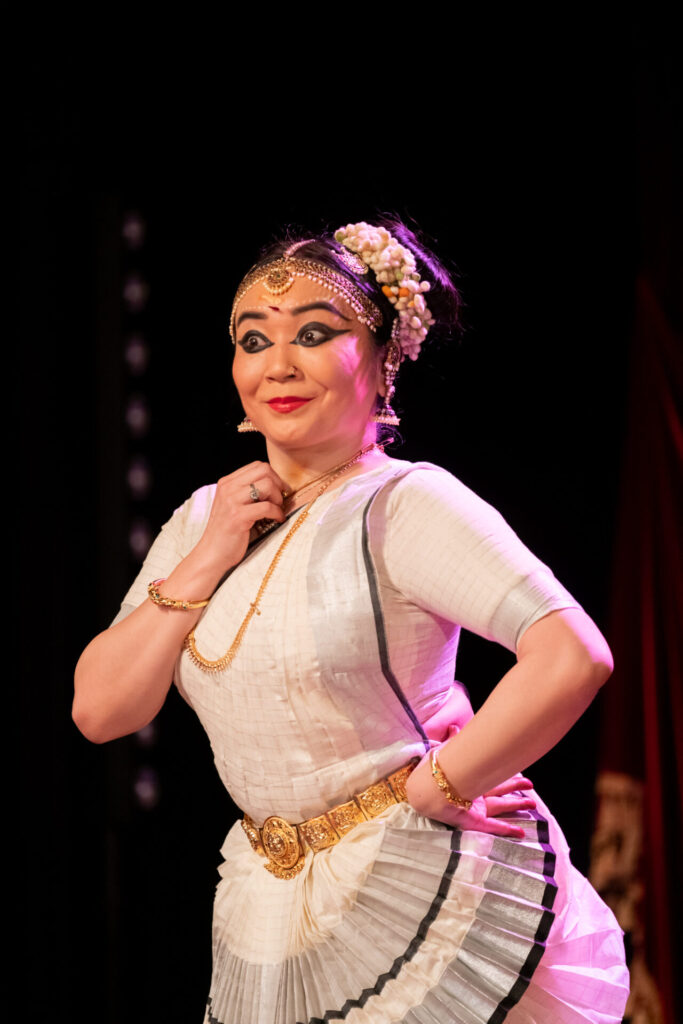
Exploring subtle emotions
After a short break, it was the Padam “Varika Varika Sakhi”. Keiko introduced Padam by first mentioning that Padam’s subtle expressions were something she had to work on after pursuing rather grand, dynamic expressions for many years. This composition, written by the Mohiniyattam legend Guru Smt. Kalyanikutty Amma, is about a heroine, the nayika, sending her friend, the sakhi, to bring her love letter to her beloved Krishna.
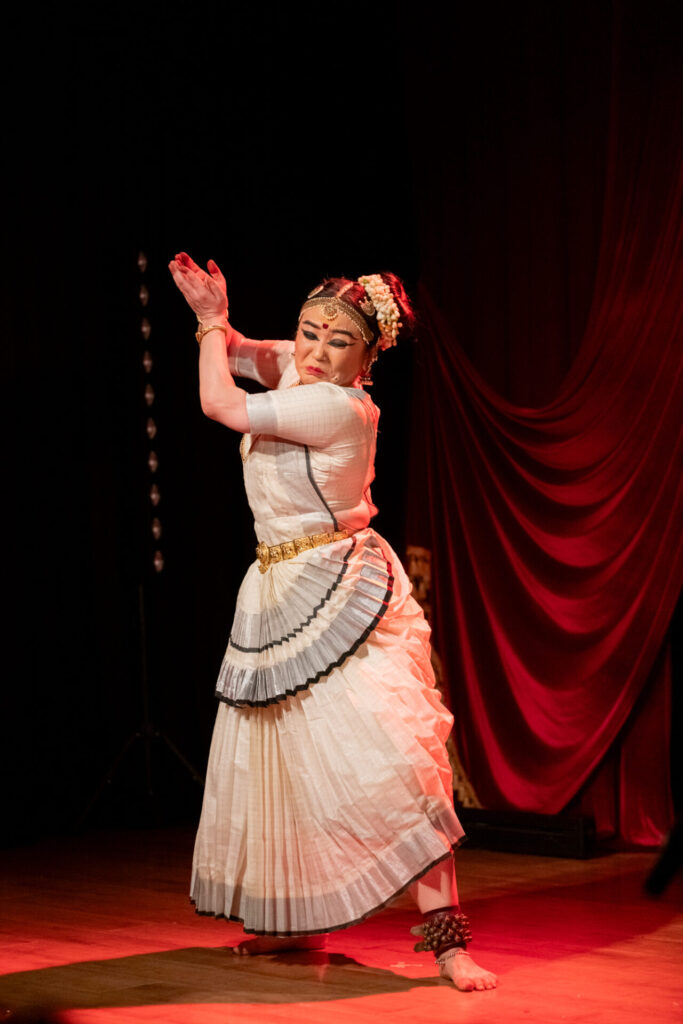
The heroine’s impatient anxiety is repeatedly expressed in various ways. Keiko brought to life the mature yet charming storyteller who would enact all the characters with composed grace. The quiet flow of bhava that runs through the choreography enchanted the time without a single interruption. Then Thillana; a pure-dance item that brought fresh breeze after a dense storytelling. A kind of lightness supported by the rooted gravity of the dancer’s posture was a sweet snack in between big dishes that the audiences could enjoy with a relaxed sense of security.
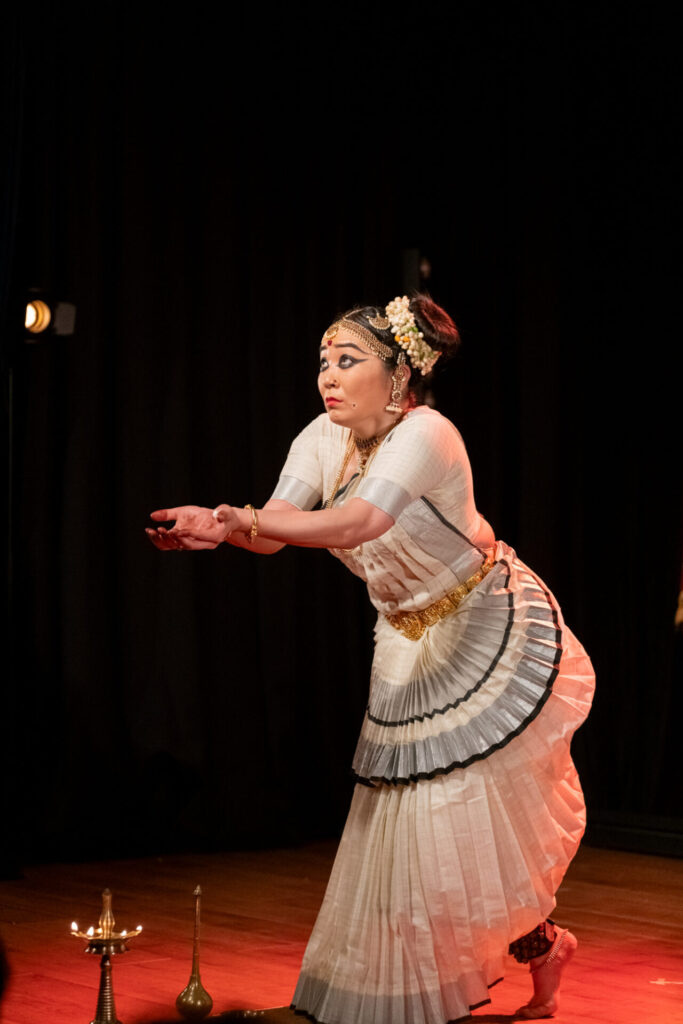
The final composition Chandanam is Keiko’s iconic repertoire that her long-time follower has seen many times and witnessed her development of the piece; a desi composition, Kerala’s indigenous style that her Guru Smt. Nirmala Paniker is well known for its revival. Keiko entered the stage with sandal paste and rose water in her hands. The blessing sprinkling of rose water on stage was another thing that many of the Japanese audience was unfamiliar with, but it was appreciated with respect and gave a fresh breeze to start this choreography.
After the episode of a girl stricken by the arrow of Kama deva, who was soothed by Chandanam, the sandal paste, Keiko went on to the episode of “churning of ocean”; where the poison-affected Shiva was healed by the power of sandal paste. The ecstatic joy and effect of sandal paste was expressed enchantingly by Keiko’s controlled yet dynamic facial expressions along with other mudras. Shiva’s falling unconscious and the following fury of Parvathy when nobody helped them are the scenes that especially leave lasting impressions. Keiko totally manifested Devi bhava on stage.
Closing with rhythm and grace
As the audience anticipated the finale, Keiko returned for Mangalam, a celebratory piece that perfectly encapsulated the evening’s devotional and artistic essence.
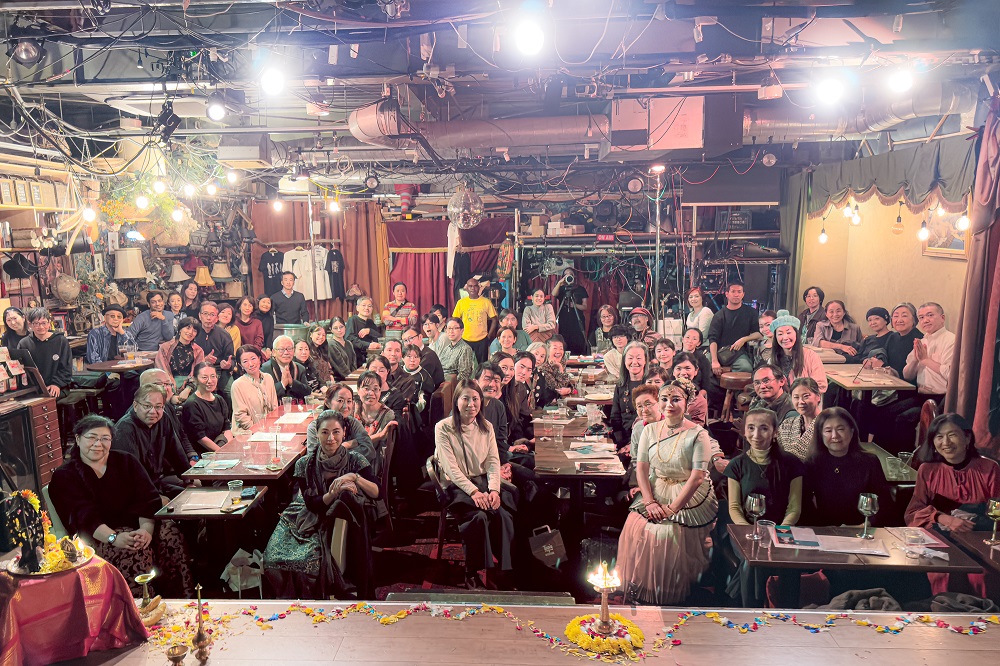
All the compositions were choreographed by Guru Smt. Nirmala Paniker, and Keiko’s performance effectively brought the charm of her Guru’s choreography to the Tokyo audience, many of whom would take this as the gem of Indian art traditions. Her Guru’s grace was clearly visible in Keiko’s presentation, and any practitioner could see how much she has embodied the teachings she was given.
Her level of practice, understanding and work into the art was evident that hardly anyone would even become conscious of it. Her mudra expressions drew the whole floor into her art. The perfect control over her movement of eyeballs exhibited the effectiveness of Kannu sadhaka, the eye training, and its intended magic. The space was captured by her presence throughout the nearly-three-hours program. While it is rather naive to easily declare in this globalising world a “Japanese sensibility”, Keiko’s art would be worth calling it a rare blend of Indian and Japanese grace.
The evening concluded with a sumptuous South Indian feast prepared by a renowned chef, leaving the audience with a lingering sense of celebration and joy.
Photo: Warihima Mikami Studio

